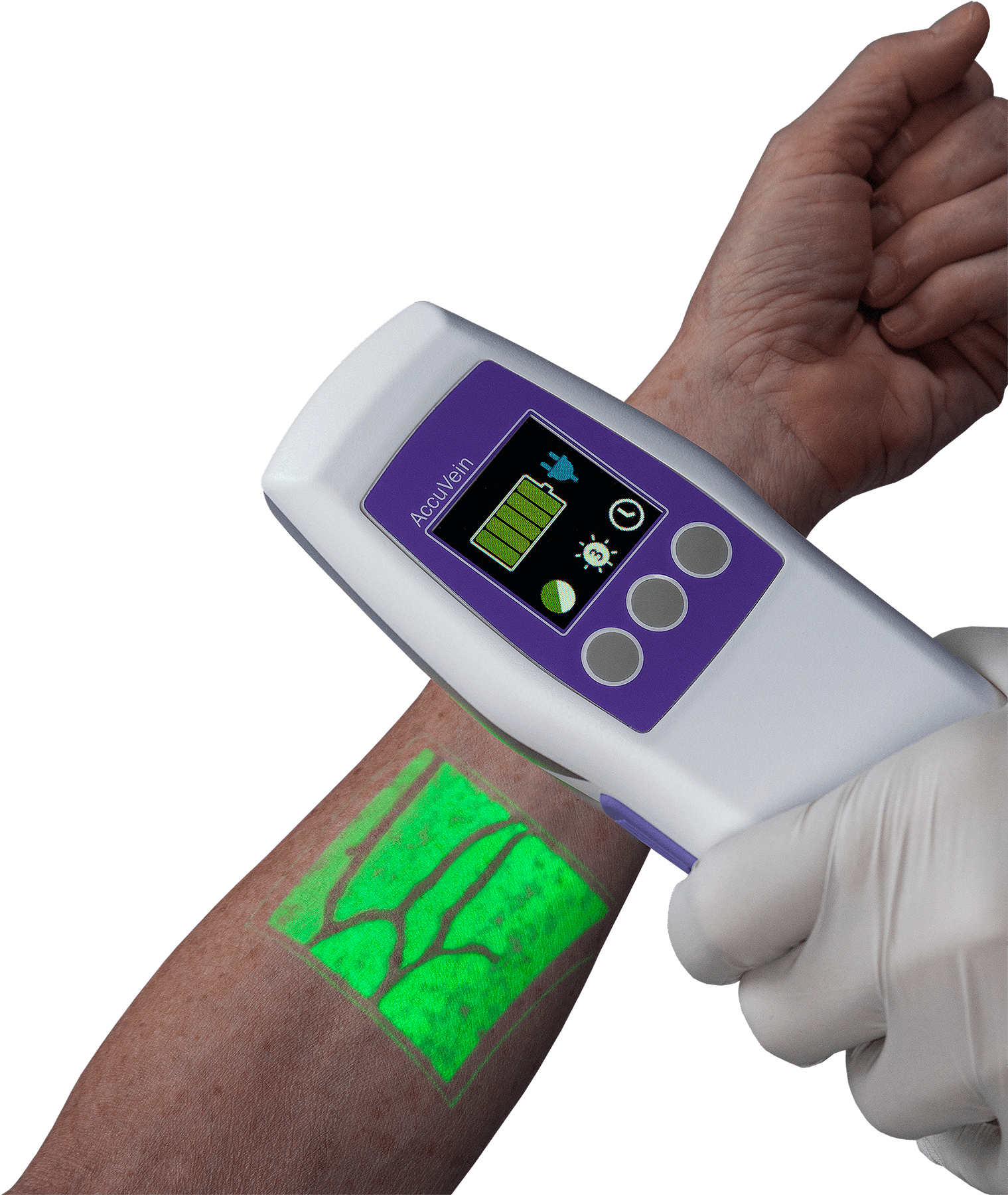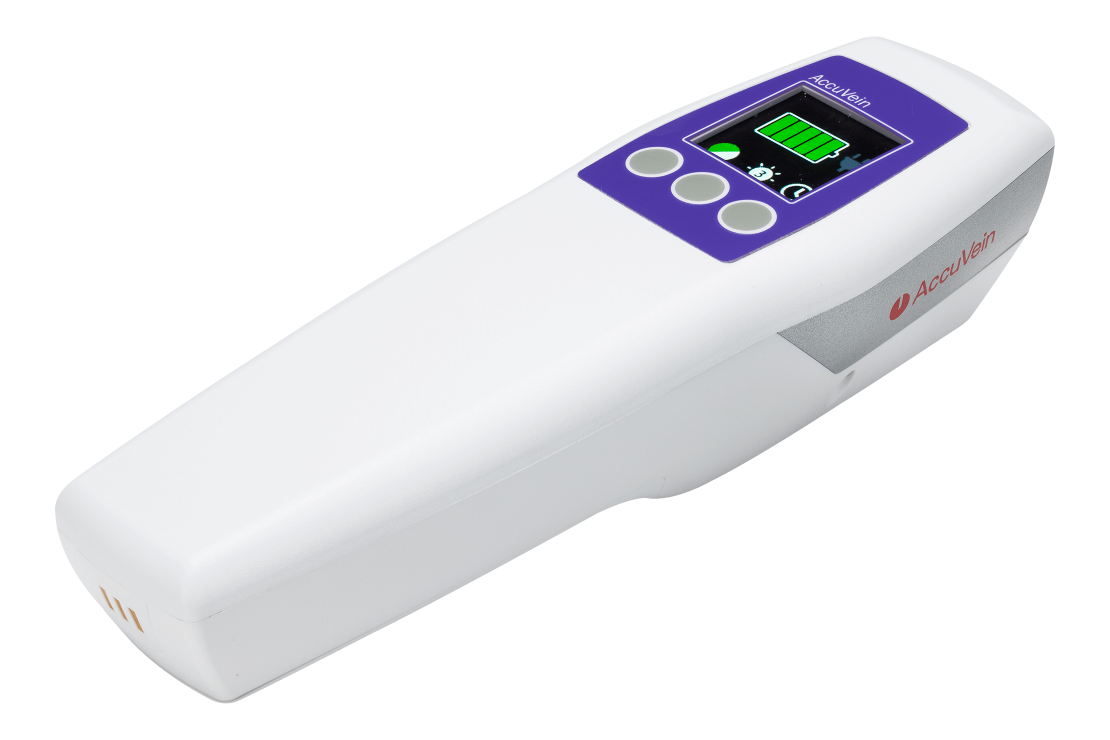Improve the Patient Experience
The Essential First Step
Improve Peripheral IV Speed and Success
The Essential First Step
Make Better Informed Site Assessments
The Essential First Step
Reduce Peripheral IV Cost and Complications
The Essential First Step
Enhance Nurse Well Being
The Essential First Step
Support Healthcare Equity
Every Patient Deserves to Be Seen

AccuVein is a leader in delivering solutions that enable healthcare professionals to access the most appropriate sites within the superficial vasculature.
With AccuVein, clinicians can see veins, valves, and bifurcations not visible to the naked eye, leading to better-informed decisions, improved needle placement, and enhanced patient care.
Who We Serve
AccuVein is a simple solution that can increase patient satisfaction, minimize peripheral IV complications and improve procedure efficiency. AccuVein’s aim is to support the clinical and operational performance of every healthcare professional who touches patients’ lives.
Vein Visualization System
AccuVein’s near-infrared (NIR) vein visualization technology raises the bar for vascular access care.
Leading professional societies recommend using near-infrared vein assessment to support better informed decision-making and care quality. When clinicians use an AccuVein device for pre-insertion assessment, they can rapidly identify optimal vein targets. This not only dramatically increases first attempt success and reduces escalation calls, but it also helps ensure that catheters last for the duration of therapy.

Why AccuVein?
78%
reduction in PIV procedure time1
92%
first attempt success rate1
45%
decrease in escalation calls2
39%
reduction in pain3
Improve efficiency, increase profitability, and boost patient and staff satisfaction.
2. Delvo-Favre E, Daneti G, Guin P. Implementation of Near-Infrared Technology (AccuVein AV400) to Facilitate Successful PIV Cannulation. Poster session at 2014 INS Annual Meeting. Abstract J Infus Nurs 2014, vol 37 No. 4). Available here.
3. Guillon P., Makhloufi, M., “prospective evaluation of venous access difficulty and a near-infrared vein visualizer at four French hemophilia treatment centers, “ Hemophilia (2014), 1-6. Available here.
The Latest
U.S. Service Notice: HF580 Powered Stand

Merz Aesthetics® Announces Exclusive Partnership With AccuVein, Offering AV500 Vein Visualization Device To Customers in the US

Imaging/Tech Supervisor
Cancer Center
David B. Vasily, M.D.
FAAD, Bethlehem, PA
Boris Molchanskiy
Vice President and CNO of New York Community Hospital
